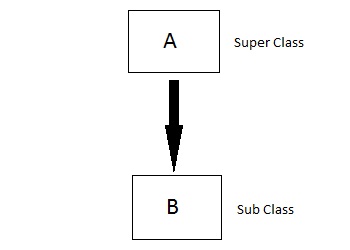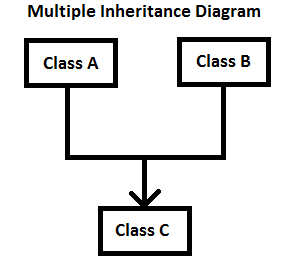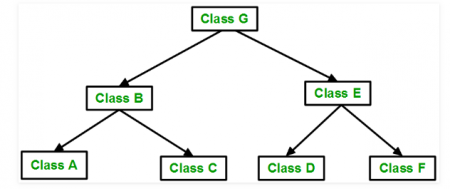Types of Inheritance in C++: As we have already learned regarding inheritance in the previous articles. Let us learn about the different types of inheritances present in C++.
Types of Inheritance in C++
- Single Inheritance
- Multiple Inheritance
- Hierarchical Inheritance
- Multilevel Inheritance
- Hybrid Inheritance
Single Inheritance
The single inheritance can be used in such a way that one derived class inherits from only one base class. And it is also known as the simplest form of inheritance.
Syntax:
class subclass_name : access_mode base_class
{
//body of subclass
};

Example:
#include<iostream>
using namespace std;
//base class
class Vehicle {
public:
Vehicle()
{
cout<<"This is a Vehicle"<<endl;
}
};
//subclass derived from two base classes
class Car: public Vehicle{
};
//main function
int main()
{
//creating object of sub class will
//invoke the constructor of base classes
Car obj;
return 0;
}
Output:
This is a Vehicle
Multiple Inheritance
The multiple inheritances a single derived class may inherit from two or more base classes.
Syntax:
class A
{
……….
};
class B
{
………..
} ;
class C: acess_specifier A,access_specifier A // derived class from A and B
{
………..
} ;

Example:
#include<iostream>
using namespace std;
//first base class
class Vehicle {
public:
Vehicle()
{
cout<<"This is a Vehicle"<< endl;
}
};
//second base class
class FourWheeler {
public:
FourWheeler()
{
cout<<"This is a 4 wheeler Vehicle" << endl;
}
};
//subclass derived from two base classes
class Car: public Vehicle, public FourWheeler {
};
//main function
int main()
{
//creating object of sub class will
//invoke the constructor of base classes
Car obj;
return 0;
}
Output:
This is a Vehicle
This is a 4 wheeler Vehicle
Hierarchical Inheritance
The hierarchical inheritance can be used to derive more than one subclass is inherited from a single base class.

Syntax:
class A // base class
{
…………..
};
class B: access_specifier A // derived class from A
{
………..
} ;
class C: access_specifier A // derived class from A
{
………..
} ;
class D: access_specifier A // derived a class from A
{
………..
} ;
Example:
#include<iostream>
using namespace std;
//base class
class Vehicle
{
public:
Vehicle()
{
cout<<"This is a Vehicle" << endl;
}
};
//first sub class
class Car: public Vehicle
{
};
//second sub class
class Bus: public Vehicle
{
};
//main function
int main()
{
//creating object of sub class will
//invoke the constructor of base class
Car obj1;
Bus obj2;
return 0;
}
Output:
This is a Vehicle
This is a Vehicle
Multilevel Inheritance
The multi-level inheritance can be used if the derived class is obtained from another derived class.
Example:
#include<iostream>
using namespace std;
// base class
class Vehicle
{
public:
Vehicle()
{
cout << "This is a Vehicle" << endl;
}
};
class fourWheeler: public Vehicle
{ public:
fourWheeler()
{
cout<<"Objects with 4 wheels are vehicles"<<endl;
}
};
// sub class derived from two base classes
class Car: public fourWheeler{
public:
car()
{
cout<<"Car has 4 Wheels"<<endl;
}
};
// main function
int main()
{
//creating object of sub class will
//invoke the constructor of base classes
Car obj;
return 0;
}
Output:
This is a Vehicle
Objects with 4 wheels are vehicles
The car has 4 Wheels
Hybrid (virtual) Inheritance
The hybrid inheritance can be used for combining more than one type of inheritance.
Example: Combining hierarchical and multiple inheritances
#include <iostream>
using namespace std;
//base class
class Vehicle
{
public:
Vehicle()
{
cout<<"This is a Vehicle" << endl;
}
};
//base class
class Fare
{
public:
Fare()
{
cout<<"Fare of Vehicle\n";
}
};
// first sub class
class Car: public Vehicle
{
};
// second sub class
class Bus: public Vehicle, public Fare
{
};
// main function
int main()
{
// creating object of sub class will
// invoke the constructor of base class
Bus obj2;
return 0;
}

